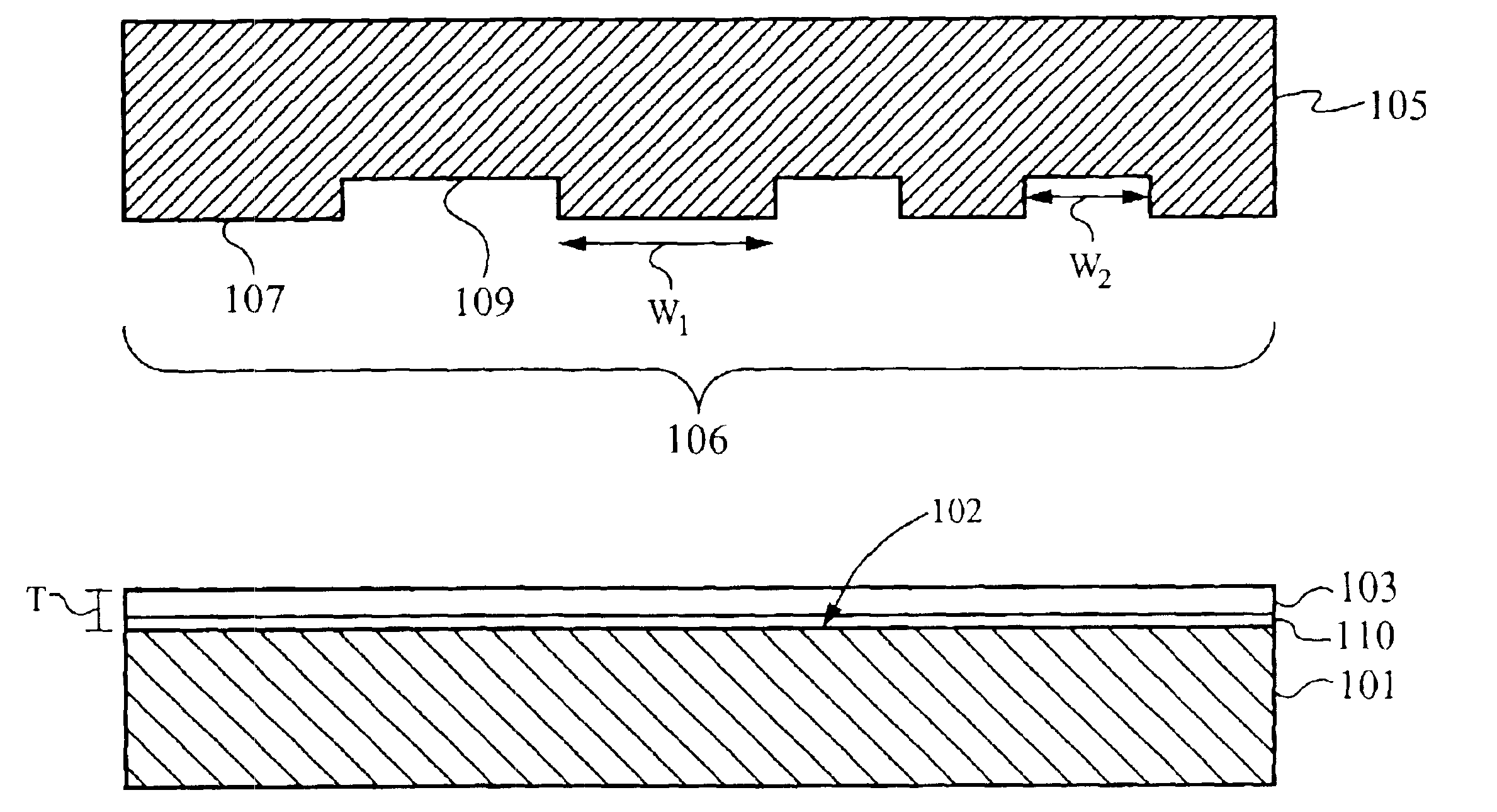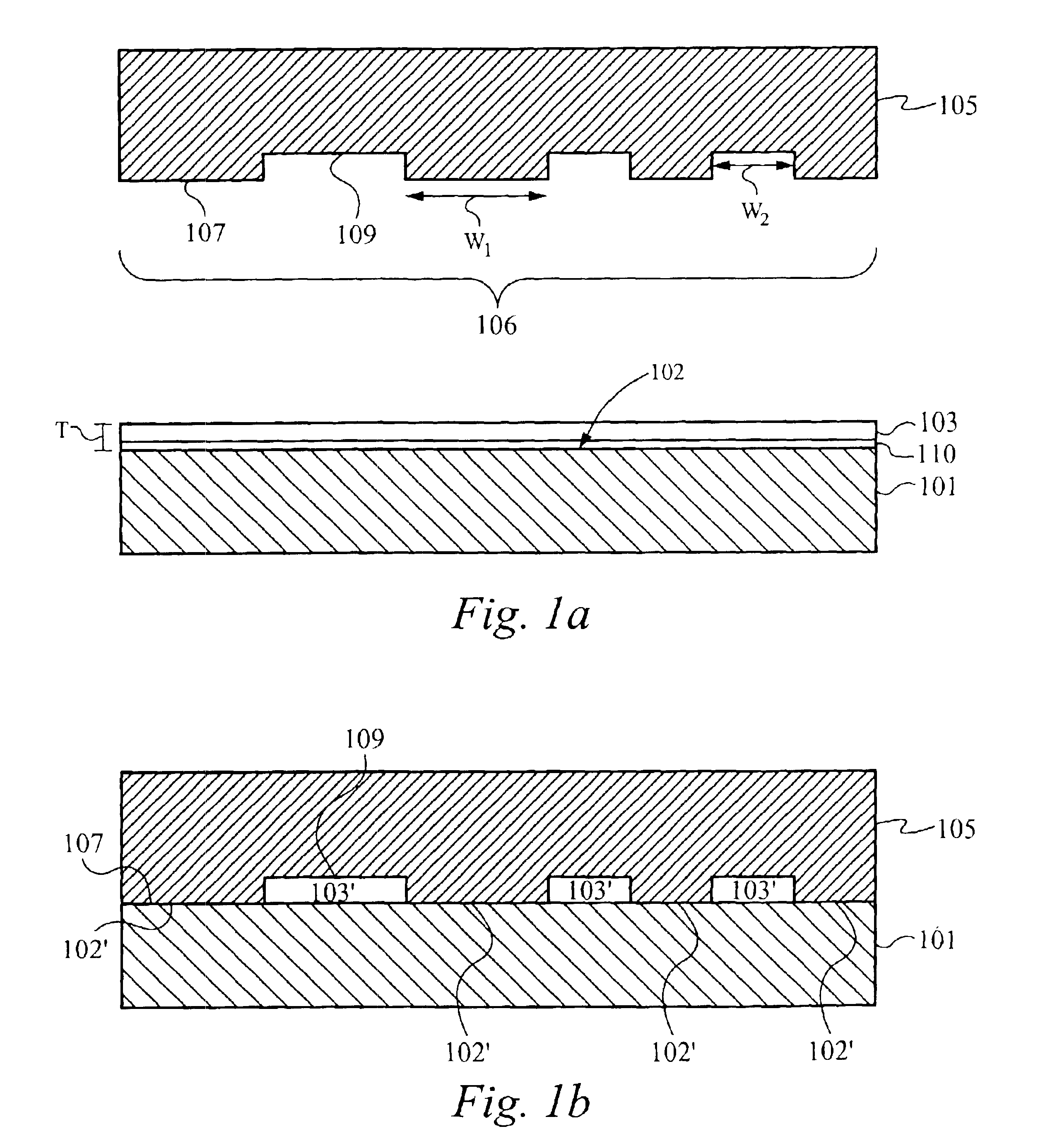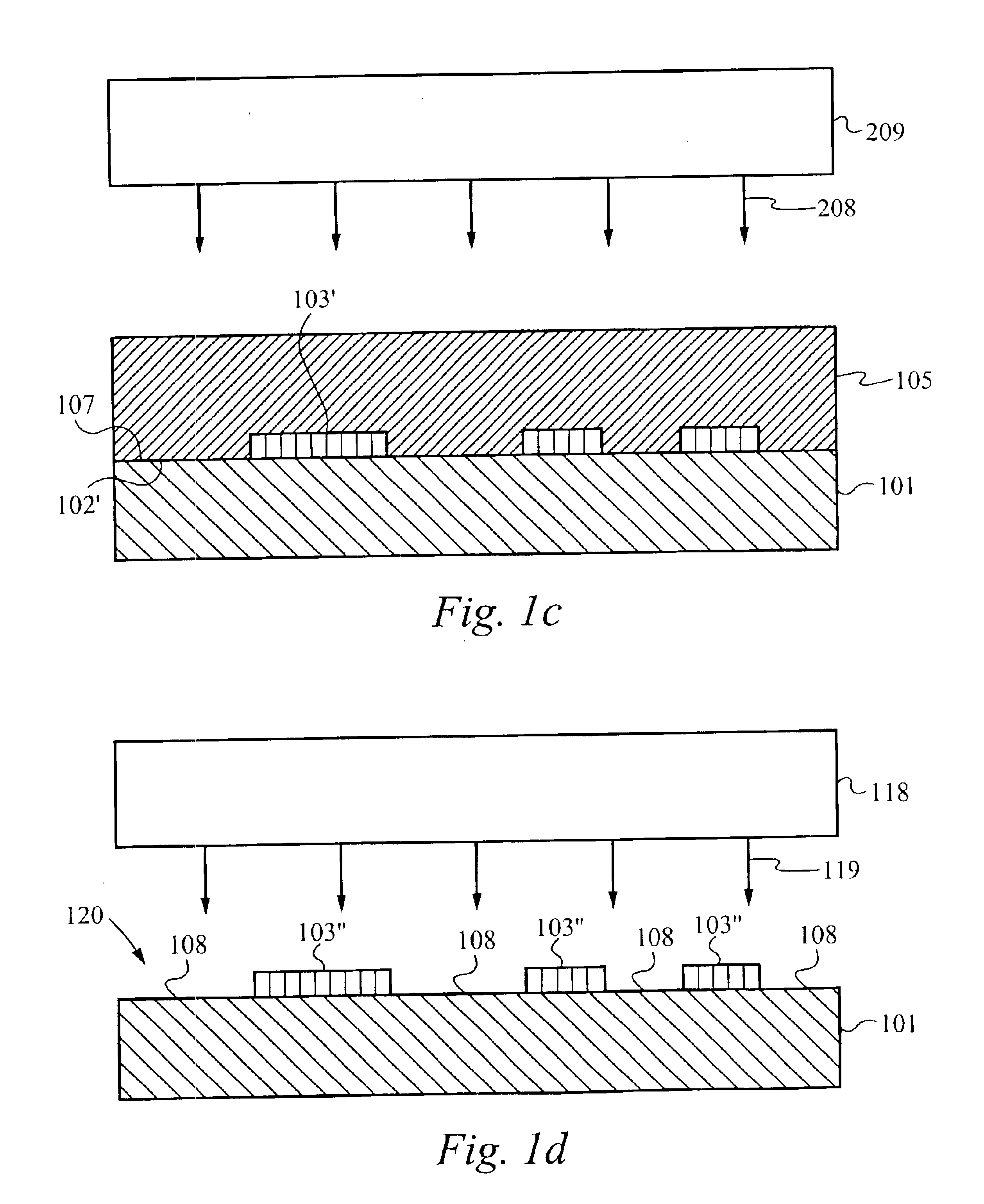Methods for patterning using liquid embossing
a technology of liquid embossing and patterning, applied in the field of patterning surfaces or layers, can solve the problems of limited resists or photoactivated polymers that can be used to form mask structures
- Summary
- Abstract
- Description
- Claims
- Application Information
AI Technical Summary
Benefits of technology
Problems solved by technology
Method used
Image
Examples
Embodiment Construction
[0025]FIGS. 1A-D illustrate cross-sectional views of a micro-stamp 105 and a method of using the micro-stamp 105 to form a first patterned layer or mask structure, in accordance with the present invention. Referring to FIG. 1A, the micro-stamp 105 comprises an embossing surface 106 patterned with raised stamp features 107 and recessed stamp features 109. Preferably, a portion of the stamp features 107 and 109 are patterned to have lateral dimensions W1 and W2 in a range of 100 nanometers to 100 microns depending the application at hand. The stamp features 107 and 109 can be patterned to have lateral dimensions W1 and W2 as small as several tens of nanometers. Preferably, the micro-stamp 105 is formed from polydimethylsiloxane (PDMS), but it may be formed from other materials, including, but not limited to, silicon, metal, glass, quartz, rubber, or plastic.
[0026]FIG. 1A also illustrates a substrate 101 having a surface 102; an interface layer 110 formed over the surface 102; and a la...
PUM
| Property | Measurement | Unit |
|---|---|---|
| Polymeric | aaaaa | aaaaa |
Abstract
Description
Claims
Application Information
 Login to View More
Login to View More - R&D
- Intellectual Property
- Life Sciences
- Materials
- Tech Scout
- Unparalleled Data Quality
- Higher Quality Content
- 60% Fewer Hallucinations
Browse by: Latest US Patents, China's latest patents, Technical Efficacy Thesaurus, Application Domain, Technology Topic, Popular Technical Reports.
© 2025 PatSnap. All rights reserved.Legal|Privacy policy|Modern Slavery Act Transparency Statement|Sitemap|About US| Contact US: help@patsnap.com



